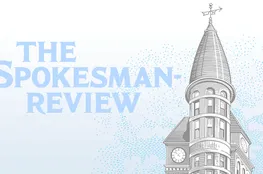The future of public education is on the brink of a major transformation due to the significant decrease in birth rates in the United States and worldwide. This demographic shift towards fewer children being born, alongside reduced immigration, is anticipated to drastically impact the school-age population over the coming decades. Historically, the U.S. faced a similar situation after the baby boom, which led to temporary challenges for schools. However, the current decline appears to be far more severe and long-lasting, as this 'baby bust' has no foreseeable end.
Recent data highlights that public school enrollment hit a peak of 50.8 million students in 2019, but projections suggest this figure will fall below 47 million by 2030. This downward trend is likely to accelerate beyond 2030 as fewer children enter the educational system. In numerous states, especially Democratic-leaning 'blue states,' projections show a drop exceeding 10%. Among these, Hawaii, California, New Mexico, and New York are expected to see decreases between 19% and 21%. Historical patterns indicate that such demographic declines have profound implications on school operations, prompting closures and teacher layoffs.
In the past, declining enrollments spurred teachers to join unions for job security, elevating these unions to national prominence and political influence. This was pivotal during property tax revolts in the 1970s, such as California’s Proposition 13, which saw districts seeking state and federal funding as local financial resources dwindled. The establishment of the Department of Education in 1980 was a significant response to these trends, offering federal backing albeit tied to student enrollment numbers.
As enrollment declines markedly, financial challenges for public schools are set to increase since state and federal funds often depend on student numbers. With state budgets under pressure from rising healthcare demands for an aging population, little financial relief is anticipated. Similarly, while the federal government isn't constrained by budget balancing as states are, recent economic factors like inflation have limited potential federal financial support. Education faces stiff competition for resources against other critical areas such as healthcare and infrastructure.
The current trajectory suggests larger and more widespread school closures and layoffs compared to the past. The reduced size of education college enrollments could also force many institutions to shut down. Teachers may again seek union protection; however, with declining numbers, union membership and influence might shrink. Beyond operational concerns, these demographic shifts present barriers to implementing educational reforms, such as school choice programs. Historically, such reforms gained traction when public schools were overcrowded and budgets were flush. Now, with schools under financial strain, resistance to change could be stronger.
Nevertheless, falling birthrates may also present an opportunity to advocate for more school choice programs as a strategic advantage in attracting families. States with a broader range of educational options might appeal more to families in regions experiencing population declines. Many states, particularly in the South and West, have already adopted such universal private school choice programs, setting a precedent that could pressure others to follow suit. This could present economic advantages by attracting new residents and fostering competitive educational landscapes.
Education policies are deeply interconnected with broader economic and demographic trends, as noted by economic historian William Fischel. His work underscores how educational systems shaped migration patterns and economic development. As birthrates decline, competitive local governance, known as Tiebout choice, might drive more states to embrace educational reforms like universal school choice. These potential policy shifts aim to attract families and maintain vibrant education systems in an increasingly competitive landscape for labor and residents.
























